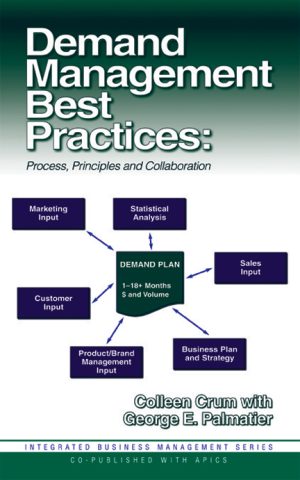Distressed Debt Analysis
$99.95
Strategies for Speculative Investors
By Stephen G. Moyer
Hardcover, 6×9, 448 pages
ISBN: 1-932159-18-5
November 2004
Description
Providing theoretical and practical insight, Distressed Debt Analysis: Strategies for Speculative Investors presents a conceptual, but not overly technical, outline of the financial and bankruptcy law context in which restructurings take place. The book covers the broader financial environment of the reorganization and the basic process of investment analysis and investment strategies. The author uses numerous real-world examples and case studies to emphasize important concepts and critical issues.
The developments that have created these extraordinary investment opportunities have also created tremendous demand for professionals with experience and knowledge in the restructuring process. Distressed Debt Analysis: Strategies for Speculative Investors addresses the complete knowledge needs of investors and professionals in the burgeoning world of financially distressed companies. It is perfect for financial analysts, portfolio managers, bankruptcy departments of law firms, restructuring advisory groups, turnaround consulting firms, and reorganization and distressed securities departments of investment banks.
Key Features
- Provides investment techniques to profit from reorganizations, restructurings, and bankruptcies, including appropriate hedging and exit strategies for either short- or long-term investment horizons
- Explains how to determine whether the investment objective is feasible given the capital structure of a target company and where in the capital structure to invest to achieve the investment goal
- Identifies when a restructuring can be accomplished outside of a bankruptcy process and the most effective strategies and techniques to effect such change
- Details the legal and financial due diligence issues that affect investment returns to appropriately identify and quantify the investment risks
- Illustrates basic investment strategies and analytical techniques with case studies and references to numerous real-world examples to emphasize important concepts and critical issues
- WAV offers downloadable due-diligence checklist, comprehensive glossary, and example of “big-boy” letter, confidentiality agreements, reorganization plans and key covenant provisions — available from the Web Added Value™ Download Resource Center upon publication
About the author(s)
Stephen G. Moyer has been a Portfolio Manager and Analyst in the Distressed Credit Group at Pacific Investment Management Company (PIMCO). Mr. Moyer has over 25 years of experience in investment analysis and corporate finance. His interest in distressed securities analysis began when he was a member of the High Yield Research Group at Drexel Burnham Lambert. He has also been affiliated with many other leading securities firms and investment managers including Tennenbaum Capital Partners, The First Boston Corporation (now Credit Suisse), Banc of America Securities, Kemper Securities (now Wells Fargo) and Imperial Capital. He began his career as a lawyer at Jones Day and later with Riordan & McKenzie. He is a recognized speaker and writer on the subject of distressed securities and a frequent lecturer at industry events and graduate business programs.
Mr. Moyer received a J.D. from Stanford University Law School, an M.B.A. from the University of Chicago Business School, and a B.A. from Grinnell College. He is a member of the California and Texas bars, holds the Chartered Financial Analyst designation, and has passed the Uniform Certified Public Accounting Examination.
Table of Contents
Chapter 1. Introduction
An Example of a Distressed Debt Situation
What Is Distressed Debt?
Investing in Distressed Debt
Chapter 2. The Distressed Debt Investment Opportunity
Financial Restructurings in the 2000–2003 Era
Precursors to Default
Economic Performance
Relative Quantity of Low-Rated Bonds
Capital Markets Liquidity
Market Conditions That Permit Superior Returns
Equal Access to Information
Rational Behavior
Low Transaction Costs
Summary
Chapter 3. Conceptual Overview of Financial Distress and
the Restructuring Process
A Simple Model of the Firm
Extensions of the Basic Model
A Conceptual View of Financial Distress
How Restructurings Attempt to “Fix” the Distress
Summary
Chapter 4. Legal Overview of Distressed Debt Restructurings
Out-of-Court Restructurings: The Preferred Option When Effective
and Feasible
The Financial Effects of an Out-of-Court Restructuring
The Out-of-Court Restructuring Process Parties Involved
Strategic Considerations in Participating on the Bondholder Committee
Beginning the Process
Implementing the Restructuring
Feasibility: The Holdout Problem
Summary
In-Court Restructurings: An Overview of the Bankruptcy Process
Declaring Bankruptcy
Jurisdiction of Filing
Timing of Filing
The Goal: The Plan of Reorganization
The Role of Exclusivity and Prefiling Coordination
Content and Structure of the Plan
Operating Under Chapter 11
Stabilizing Operations
Developing a Going-Forward Business Plan
Determining the Assets and Liabilities
Determining the Valuation and the New Capital Structure
Voting on and Confirming a Plan of Reorganization
Summary
Chapter 5. Overview of the Valuation Process
The Basics of Cash-Flow-Based Valuation
Using EBITDA as a Measure of Cash Flow
Understanding and Adjusting EBITDA
Limitations of EBITDA
Comparing Discounted Cash Flow and EBITDA Multiple Approaches
Comparable Company Analysis Based on Enterprise Value
Calculating Enterprise Value
Determining the Correct Multiple
Using Comparable Company Analysis
Alternatives to the EBITDA Multiple Approach
Revenue-Based Valuations
Asset-Based Valuations
Customer-Based Valuations
Liquidation Valuations
Summary
Chapter 6. Leverage and the Concepts of Credit Support and Capacity
The Interrelationship of Credit Risk and Credit Support
Credit Risk
Credit Support
Credit Capacity
Credit Capacity as Measured by Debt Repayment Ability
Stable Cash Flow Scenarios
Volatile Cash Flow Scenarios
Debt Capacity Under Alternative Criteria
Asset Coverage
Ability to Refinance
Interest Expense Coverage
Capital Instruments Designed to “Avoid” Credit Capacity Criteria
Exchangeable Preferred Stock
Convertible Bonds
Discount Notes and Payment-in-Kind Notes
Summary
Chapter 7. Capital Structures and the Allocation and Management of
Credit Risk
Using Corporate and Capital Structures to Allocate Credit Risk
Grants of Collateral
Contractual Provisions
Maturity Structure
Corporate Structure
How Capital Structures Manage Credit Risk
Leverage
Priority
Restricted Payments
Negative Pledge Clauses
Time
Performance Covenants
Put Rights
Forced Call in the Event of a Downgrade
Performance-Linked Pricing Provisions
Summary
Chapter 8. Causes of Financial Distress and the Restructuring
Implications
Indicators of Financial Distress
Debt Ratings
Predictive Models
Market Prices
Causes of Financial Distress
Performance Materially Below Expectation
Economic Downturn
Uncompetitive Product or Service
Unrealistic Business Plan
Poor Management
Near-Term Liquidity Issues
Bank Debt Scenarios
No Bank Debt Scenarios
Unexpected Liabilities
Tort Claims
Contract Liabilities
Crisis of Confidence: Fraud and Other Events That Create Financial Uncertainty
Reliability of Historical Financial Data and Valuation Issues
Liquidity and the Likelihood of Bankruptcy
Summary
Chapter 9. Options for Alleviating Financial Distress:
The Company’s Perspective
Properly Assessing the Distressed Firm’s Likely Actions Is Key to Assessing the Investment Outcomes
Example 1: Playing the Waiting Game
Example 2: Between a Rock and a Hard Place
Summary
Strategic Options to Resolve Financial Distress Outside Bankruptcy
Raise Additional Capital
Asset Sales
Secured Financings
Sale/Leaseback Financings
Equity Sponsors
Reducing Leverage
Open Market Repurchases
Direct Purchases from Holders
Cash Tender Offers
Exchange Offers
Coercive Exchange Offers
Noncoercive Exchange Offers
Constraints on the Range of Options
Liquidity
Time-to-Liquidity Event
Magnitude of Problem
Complexity of Capital Structure
Severability of Business Units
Cause(s) of Financial Distress
Strategies When Bankruptcy Appears Necessary
Maintaining Liquidity
Preplanned Filings
Summary
Chapter 10. Profiting from Financial Distress: The Investor’s Perspective
Defining the Investment Objectives
Tailoring a Strategy to the Investment Objectives
Non-Chapter 11 Situations
Passive Involvement
Active Involvement
Chapter 11 Situations
Feasibility Considerations
Capital Structure
Market Versus True Valuation
Market Liquidity/Concentration of Holdings
Other Distressed Investors
Bank Debt
Large Block Holders of Public Debt
Hedging and Capital Structure Arbitrage
Return Potential of Capital Structure Arbitrage
Common Capital Structure Arbitrage Trades
Pari Passu Securities with Different Maturities
Senior Versus Junior Securities
Bonds Versus Equity
Summary
Chapter 11. Practical Aspects of the Investment Process
and Due Diligence
Practical Realities of the Investment Analysis Process
Screening Situations to Prioritize Opportunities
Reacting to Volatile Situations
A Time-Efficient Valuation Methodology
Performing Due Diligence
Diligence Cost-Benefit Analysis
Prioritizing the Diligence Issues
Financial Due Diligence
Basic Goals of Financial Due Diligence
Obtaining Publicly Available Financial Information
Accessing Management
Special Valuation Considerations in Financially Distressed
Contexts
Business Deterioration During a Reorganization
Reorganization Costs
Critical Vendor Payments
Cash Accumulation During the Reorganization Tax Issues
Liquidity Implications of a Distressed Firm’s Current Tax Status
Potential Value from Carryforward of Net Operating Losses
Priority Status of Tax Claims
Legal Due Diligence
Obtaining the Relevant Documents
Checklist of Legal and Bankruptcy-Related Issues to Consider
Voidable Preferences
Substantive Consolidation
Structural Advantages
Equitable Subordination
Zone of Insolvency
Special Considerations When Investing in Claims That Are Not Negotiable Instruments
Recent Developments Under the Sarbanes-Oxley Act of 2002
Mechanics of Accumulating the Investment
Investment Strategy and Market Environment Drive Accumulation Approach
Consummating the Trade
Firm Market
No Market or Above-Market Offering
Settling the Trade
Bank Debt
Holder Identity
Settlement
Special Considerations for Revolving Loans
Summary
Chapter 12. Dynamics of the Workout Process: The Endgame
The Parties
The Debtor
Debtor’s Bankruptcy Counsel
Debtor’s Financial Advisor
The Committee
Committee Legal Counsel
Committee Financial Advisor
The Secured Creditors
The Bankruptcy Judge
Types of Chapter 11 Cases
Preplanned Restructuring
Full Prepack
Prenegotiated Filings
Asset Sales
Sales Intended to Enhance Recoveries by Maximizing Estate Value
Sales Designed to Maximize Creditor Recoveries
Free-Fall and Contested Chapter 11 Reorganizations
Sources of Leverage in the Chapter 11 Process
Delay
Management and the Right of Exclusivity
Creditors and the Threat of Litigation
Priority
Secured Creditors
Valuation
Voting and Confirmation
Voting
Confirmation
Summary
Chapter 13. Postreorganization Considerations
Postreorganization Equities
Size of Expected or Probable Market Capitalization
Postreorganization Trading Float
Forced Sellers
Company Profile
Postconfirmation Lockups
Tax-Based Trading Restrictions
Warrants
Trading Performance of Back-End Equities
Postreorganization Debt Securities
Liquidating Trusts
Summary
Endnotes
Literature Survey and Selected References
Appendix: Chess Notation and Game Moves
Disclosure of Possible Conflicts of Interest
Index
You may also like…
Related products
-

Advanced Project Portfolio Management and the PMO
Retail Price: $74.95$59.95 Add to cart -

Achieving Project Management Success Using Virtual Teams
Retail Price: $49.95$39.95 Add to cart -

Demand Management Best Practices
Retail Price: $54.95$49.95 Add to cart -

The Lean Extended Enterprise
Retail Price: $59.95$49.95 Add to cart -

Risk Management for Project Driven Organizations
Retail Price: $54.95$44.95 Add to cart




